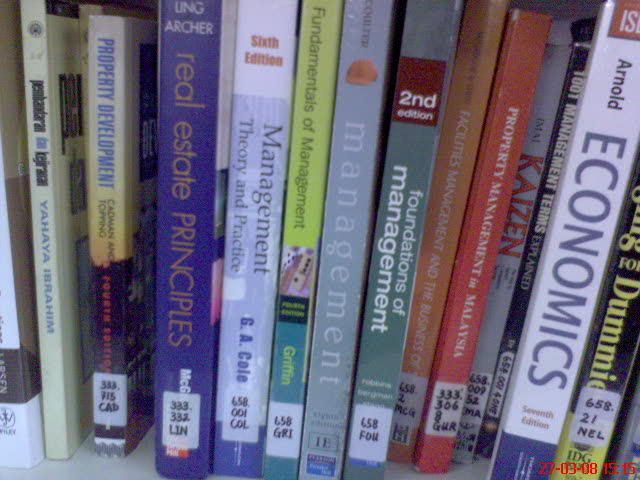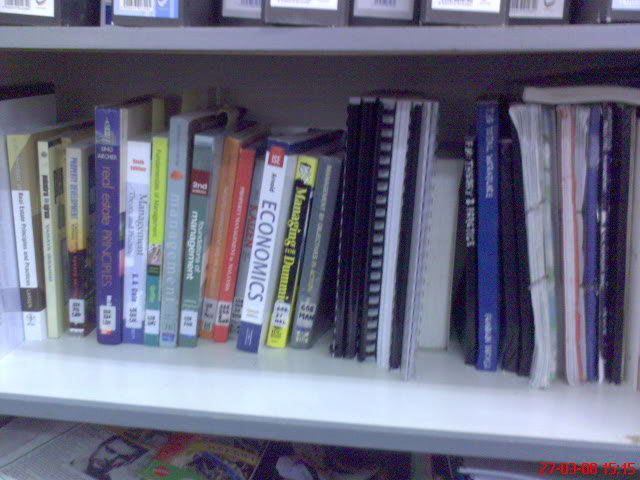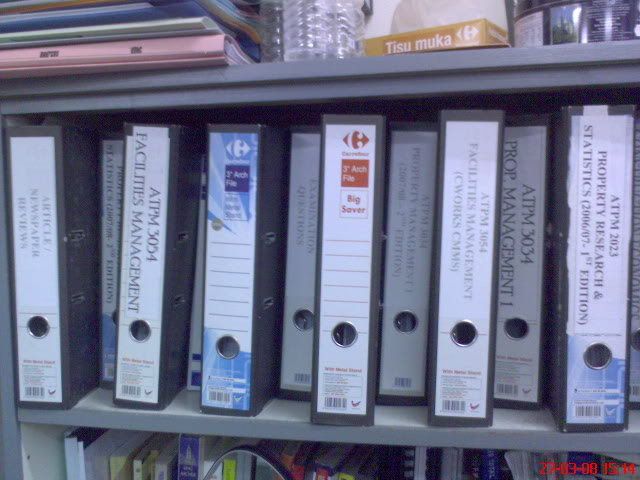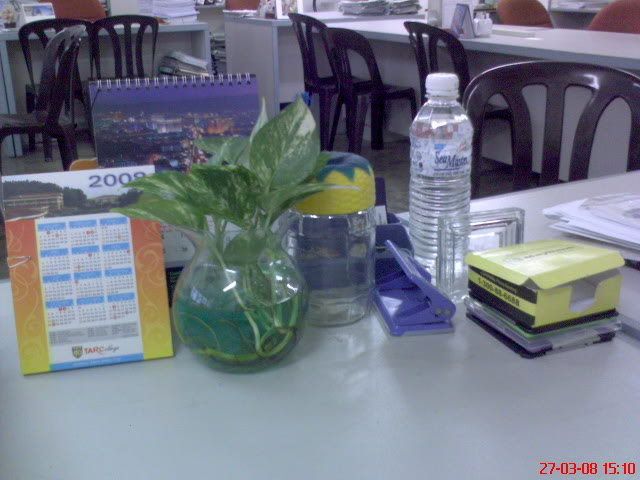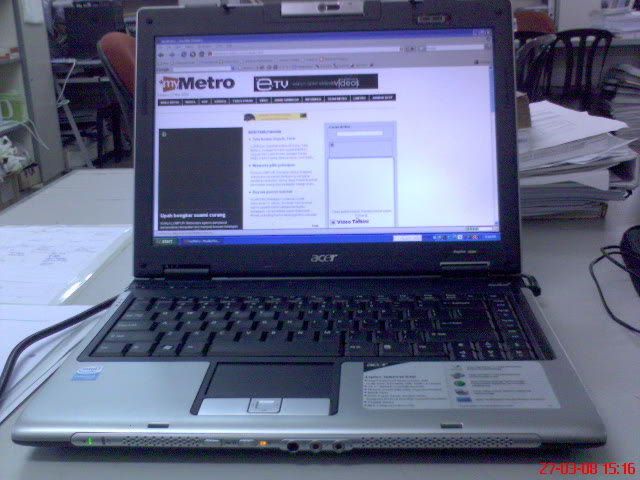i never expect this would be happening to me...i've got two healthy kids,two wonderful pregnancy time.but who would expect the third pregnancy would be ended with miscarriage.my happiness of finding that the third baby is coming in ended on 25th november 2008 at the age of 7 weeks.so...for those who face the same fate as me....this article from http://www.babycenter.com/might be helpful to cope with.
What is a miscarriage?
Miscarriage is the loss of a pregnancy in the first 20 weeks. About 15 to 20 percent of known pregnancies end in miscarriage, and more than 80 percent of these losses happen before 12 weeks.
This doesn't include situations in which you lose a fertilized egg before you get a positive pregnancy test. Studies have found that 30 to 50 percent of fertilized eggs are lost before a woman finds out she's pregnant, because they're lost so early that she goes on to get her period about on time -- in other words the woman doesn't realize she was pregnant at all.
If you lose a baby after 20 weeks of pregnancy, it's called a stillbirth.
What causes a miscarriage?
Between 50 and 70 percent of first trimester miscarriages are thought to be random events caused by chromosomal abnormalities in the fertilized egg. Most often, this means that the egg or sperm had the wrong number of chromosomes, and as a result, the fertilized egg can't develop normally.
In other cases, a miscarriage is caused by problems that occur during the delicate process of early development — for example, when an egg doesn't implant properly in the uterus or an embryo has structural defects that don't allow it to continue developing. Since most healthcare practitioners won't do a full-scale workup after a single miscarriage, it's usually impossible to tell why the pregnancy was lost. And even when a detailed evaluation is performed — say after you've had two or three consecutive miscarriages — the cause still remains unknown in about half of cases.
When the fertilized egg has chromosomal problems, you may end up with what's sometimes called a blighted ovum (now usually referred to in medical circles as an early pregnancy failure). In this case, the fertilized egg implants in the uterus and the placenta and gestational sac begin to develop, but the resulting embryo either stops developing very early or doesn't form at all.
Because the placenta begins to secrete hormones, you'll get a positive pregnancy test and may have early pregnancy symptoms, but an ultrasound will show an empty gestational sac. In other cases, the embryo does develop for a little while but has abnormalities that make survival impossible, and development stops before the heart starts beating.
Once your baby has a heartbeat — usually visible on ultrasound at around 6 weeks — your odds of having a miscarriage drop significantly.
What kinds of things might put me at a higher risk for miscarriage?
Though any woman can miscarry, some are more likely to miscarry than others. Here are the most common risk factors:
• Age: Older women are more likely to conceive babies with chromosomal abnormalities, and to miscarry them as a result. In fact, 40-year-olds are about twice as likely to miscarry as 20-year-olds.
• A history of miscarriages: Women who have had two or more miscarriages in a row are more likely than other women to miscarry again.
• Certain chronic diseases or disorders: Poorly controlled diabetes, certain inherited blood clotting disorders, certain autoimmune disorders (such as antiphosphilipid syndrome or lupus), and certain hormonal disorders (such as polycystic ovary syndrome).
• Uterine or cervical problems: Having certain uterine abnormalities or a weak or abnormally short cervix (known as cervical insufficiency).
• A history of birth defects or genetic problems: Having had a child with a birth defect, or a family history (or a partner with a family history) of genetic problems.
• Certain infections: Research has shown a somewhat higher risk for miscarriage if you have listeria, mumps, rubella, measles, cytomegalovirus, parvovirus, gonorrhea, HIV, and certain other infections.
• Smoking, drinking, and using drugs: Smoking a lot, drinking too much alcohol, and using drugs like cocaine and ecstasy during pregnancy can all increase your risk for miscarriage. And some studies show an association between drinking four or more cups of coffee a day and a higher risk of miscarriage.
• Taking certain medications: Some medications have been linked to increased risk of miscarriage, so it's important to ask your caregiver about the safety of any medications you're taking even while you're trying to conceive. This goes for prescription and over-the-counter drugs, including nonsteroidal anti-inflammatory drugs (NSAIDs) like ibuprofen and aspirin.
• Exposure to environmental toxins: Environmental factors that might increase your risk include lead; arsenic; some chemicals, like formaldehyde, benzene, and ethylene oxide; and large doses of radiation or anesthetic gases.
• Paternal factors: Little is known about how the father's condition may contribute to a couple's risk for miscarriage, though the risk increases with the father's age. Researchers are studying the extent to which sperm could be damaged by environmental toxins but still manage to fertilize an egg. Some studies have found a greater risk of miscarriage when the father has been exposed to mercury, lead, and some industrial chemicals and pesticides.
Your risk of miscarriage also rises with each child you bear and if you get pregnant within three months after giving birth.
What are the signs that I might be having a miscarriage?
Vaginal spotting or bleeding is usually the first sign of miscarriage. Keep in mind, though, that up to 1 in 4 pregnant women have some bleeding or spotting (finding spots of blood on your underpants or toilet tissue) in early pregnancy, and half of these pregnancies don't end in miscarriage.
You may also have abdominal pain, which usually begins after you first have some bleeding. It may feel crampy or persistent, mild or sharp, or may feel more like low back pain or pelvic pressure. If you have both bleeding and pain, the chances of your pregnancy continuing are much lower.
It's very important to be aware that vaginal bleeding, spotting, or pain in early pregnancy can also signal an ectopic or a molar pregnancy. If you have any of these symptoms, call your doctor or midwife right away so she can determine whether you have a potential problem that needs to be dealt with immediately. Also, if your blood is Rh-negative, you may need a shot of Rh immune globulin within two or three days after you first notice bleeding, unless the baby's father is Rh-negative as well.
Some miscarriages are first suspected during a routine prenatal visit, when the doctor or midwife can't hear the baby's heartbeat or notices that your uterus isn't growing as it should be. (Often the embryo or fetus stops developing a few weeks before you have symptoms, like bleeding or cramping.) If your practitioner suspects that you've had a miscarriage, she'll order an ultrasound to see what's going on in your uterus and possibly do a blood test.
What should I do if I suspect I'm about to miscarry?
Call your doctor or midwife immediately if you ever notice unusual symptoms such as bleeding or cramping during pregnancy. Your practitioner will examine you to see if the bleeding is coming from your cervix and check your uterus. She may also do a blood test to check for the pregnancy hormone hCG and repeat it in two to three days to see if your levels are rising as they should be.
If you're having bleeding or cramping and your practitioner has even the slightest suspicion that you have an ectopic pregnancy, you'll have an ultrasound right away. If there's no sign of a problem but you continue to spot, you'll have another ultrasound at about 7 weeks.
At this point, if the sonographer sees an embryo with a heartbeat, you have a viable pregnancy and your risk of miscarrying is now much lower, but you'll need to have another ultrasound later if you continue to bleed. If the sonographer sees an embryo of a certain size but no heartbeat, that means the embryo didn't survive.
If the sac or the embryo is smaller than expected, though, it might just be that your dates are off and you're not as far along as you thought. Depending on the circumstances, you may need a repeat ultrasound within one to two weeks and some blood tests before your caregiver can make a final diagnosis.
If you're in your second trimester and an ultrasound shows your cervix is shortening or opening, your doctor may decide to perform a procedure called a cerclage, in which she stitches your cervix closed in an attempt to prevent miscarriage or premature delivery. (This is assuming your baby appears normal on the ultrasound and you have no signs of an intrauterine infection.) Cerclage isn't without risk, and not everyone agrees on what might make you a good candidate for it.
If you're showing signs of a possible miscarriage, your doctor or midwife may prescribe bedrest in hopes of reducing your chances of miscarrying — but there's no evidence that bedrest will help. She may also suggest you not have sex while you're having bleeding or cramping. Sex doesn't cause miscarriage, but it's a good idea to abstain if you're having these symptoms.
You may have light bleeding and cramping for a few weeks. You can wear sanitary pads but no tampons during this time and take acetaminophen for the pain. If you are miscarrying, the bleeding and cramping will likely get worse shortly before you pass the "products of conception" — that is, the placenta and the embryonic or fetal tissue, which will look grayish and may include blood clots.
If you can, save this tissue in a clean container because your caregiver may want to examine it or send it to a lab for testing to try to find out why you miscarried. In any case, she'll want to see you again at this point, so call her to let her know what's happened.
What should I do if my practitioner tells me I've lost the pregnancy but I still haven't passed the tissue?
There are different ways of handling this, and it's a good idea to discuss the pros and cons of each with your caregiver. If there's no threat to your health, you may choose to let the miscarriage happen on its own timeline. (More than half of women spontaneously miscarry within a week of finding out that the pregnancy is no longer viable.) Or you may decide to wait a certain amount of time to see if it happens before having a procedure to remove the tissue.
In some cases, you can use medication to speed up the miscarriage process, although there may be side effects such as nausea, vomiting, and diarrhea. If you choose to wait or take medication to try to speed up the process, there's a chance you'll end up needing to have the tissue surgically removed anyway.
On the other hand, if you find that it's too emotionally trying or physically painful to wait for it to pass, you may decide to just have the tissue removed. This is done by suction curettage or dilation and curettage (D&C). You'll definitely need to have the tissue removed right away if you have any problems, such as significant bleeding or signs of infection, that make it unsafe to wait for a miscarriage. And your practitioner may recommend the procedure if this is your second or third miscarriage in a row, so that they can test the tissue for a genetic cause.
What is the curettage procedure like?
The procedure doesn't usually require an overnight stay unless you have complications. As with any surgery, you'll need to arrive with an empty stomach — no food or drink since the night before.Most obstetricians prefer to use suction curettage (or vacuum aspiration), because it's thought to be slightly quicker and safer than a traditional D&C, though some will use a combination of the two procedures. For either procedure, the doctor will insert a speculum into your vagina, clean your cervix and vagina with an antiseptic solution, and dilate your cervix with narrow metal rods (unless your cervix is already dilated from having passed some tissue). In most cases, you'll be given sedation through an IV and a local anesthetic to numb your cervix.
For a suction curettage, the doctor will pass a hollow plastic tube through your cervix and suction out the tissue from your uterus. For a traditional D&C, she uses a spoon-shaped instrument called a curette to gently scrape the tissue from the walls of your uterus. The whole thing may take about 15 to 20 minutes, though the tissue removal itself takes less than ten minutes. Finally, if your blood is Rh-negative, you'll need a shot of Rh immune globulin unless the baby's father is Rh-negative, too
What happens after a miscarriage?
Whether you miscarry on your own or have the tissue removed, you'll have mild menstrual-like cramps afterward for up to a day or so and light bleeding for a week or two. Use pads instead of tampons and take ibuprofen or acetaminophen for the cramps. Avoid sex, swimming, douching, and using vaginal medications for at least a week or two and until your bleeding stops.
If you begin to bleed heavily (soaking a sanitary pad in an hour), have any signs of infection (such as fever, achiness, or foul-smelling vaginal discharge), or feel excessive pain, call your practitioner immediately or go to the emergency room. If your bleeding is heavy and you begin to feel weak, dizzy, or lightheaded, you may be going into shock. In this case, call 911 right away — don't wait to hear from your caregiver, and don't drive yourself to the ER.
Does having one miscarriage mean I'm likely to miscarry again?
No. Although you're likely to be worried about the possibility of another miscarriage, fertility experts don't consider a single early pregnancy loss to be a sign that there's anything wrong with you or your partner.
Some practitioners will order special blood and genetic tests to try to find out what's going wrong after two miscarriages in a row, particularly if you're 35 or older or have certain medical conditions. Others will wait until you've had three consecutive losses. In certain situations, such as if you had a second trimester miscarriage or an early third trimester premature birth from a weakened cervix, you might be referred to a high-risk specialist after a single loss so she can carefully manage your pregnancy.
When can I try to conceive again?
You may have to wait a bit. Whether you miscarry spontaneously or have the tissue removed, you'll generally get your period again in four to six weeks.
Some practitioners say you can start trying to conceive again after this period, but others recommend that you wait until you've been through another menstrual cycle so that you have more time to recover physically and emotionally. (You'll need to use birth control to prevent conception during this time, because you may ovulate as early as two weeks after you miscarry.)
I can't seem to get over having miscarried. How can I cope?
Though you may be ready physically to get pregnant again, you may not feel ready emotionally. Every woman copes with the grief of early pregnancy loss in her own way.
Some cope best by turning their attention toward trying for a new pregnancy as soon as possible. Others find that months or more go by before they're interested in trying to conceive again. Take time to examine your feelings, and do what feels right for you and your partner. Ask your caregiver where to get counseling or find support groups, if you think that would be helpful.














